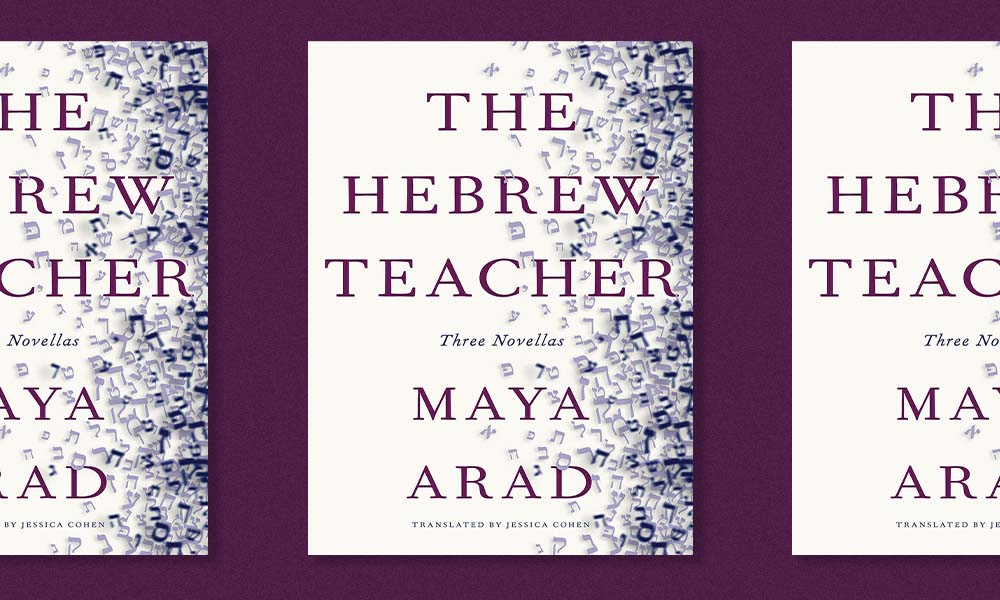
In her 1987 book Israeli Mythogynies: Women in Contemporary Hebrew Fiction, literary scholar Esther Fuchs criticized the treatment of Israeli women writers, complaining that recent theories about contemporary Israeli fiction tended to “marginalize or altogether ignore female experience and female writing.”
She was hardly a lone voice. A few years later, in the Hebrew literary magazine Moznayim (Scales), the distinguished Israeli novelist Amalia Kahana-Carmon argued that Jewish religious tradition deserved some of the blame for that attitude. Judaism’s traditional bias against the education of women, she wrote, as well as the separation of women in Orthodox synagogues, helped feed the idea that only men speak for the “collective” of the Israeli nation. From an American perspective, one can see how Hebrew fiction translated into English corroborated that analysis. Amos Oz, Aharon Appelfeld, A.B. Yehoshua and David Grossman became the four horsemen of modern Israeli fiction, with every book of theirs translated by major U.S. trade houses. Some Israeli women fiction writers appeared here—one thinks of Shulamith Hareven, among others—but not with the same support and media attention. Of the horsemen, only Grossman is still alive and writing, and yet there’s been no commensurate increase in translation of Israeli women writers by major American presses.
New Vessel Press’s publication in English of Maya Arad’s expertly observed The Hebrew Teacher: Three Novellas should therefore be welcomed as progress until that situation changes. Arad, the author of 11 books of fiction in Hebrew, more than deserves an American audience. And yet readers looking for deep on-the-ground insight into Israeli life and thinking may be disappointed.
At 53, Arad, who earned a PhD in linguistics from University College, London, has lived for 20 years in Silicon Valley, where she’s a writer-in-residence at Stanford’s Taube Center for Jewish Studies and a scholar of Hebrew linguistics. All three novellas take place in the United States—one in the Midwest and two in California. The dominant issues explored in them are, respectively, academic tension between colleagues on a college campus; the uneasy visit of an Israeli grandmother to her toddler grandson; and mother-daughter difficulties in Palo Alto.
Might this be dubbed yordim fiction? That’s a freighted term, of course. Israelis in the first five decades of the state traditionally looked down on countrymen who decided to live permanently abroad, designating emigration as yerida, “going down,” in contrast to immigration or aliyah, “going up.” In a famous 1976 remark for which he later apologized, Prime Minister Yitzhak Rabin called yordim “nefolot shel nemushot,” “the lowest of the low.” Although that critical attitude softened as Israel stabilized and no longer faced (until this year) major wars, skepticism persists among Israelis about the right or ability of Israeli yordim to capture Israeli realities.
It’s not clear that the category really applies here, though. A fairer tag would be the one Arad herself ventriloquizes through the protagonist of her title story—Israeli diasporic fiction. Yes, the Jewish diaspora and the Israeli diaspora are now two different matters, two different (if occasionally overlapping) territories.
In “The Hebrew Teacher,” Ilana Goldstein, who came to the United States almost 45 years ago, teaches introductory Hebrew as an adjunct at a Midwestern college. She’s drawing fewer students to Beginner’s Hebrew Israel, she knows, “is a tough sell these days.” In a refrain that reappears throughout the story, Ilana thinks, “It wasn’t a very good time for Hebrew.”
Even her son Barak tells her, “Young Jews are sick of your generation, which defends Israel at any cost no matter what it does.”
Things get worse. The college hires Yoad Bergman-Harari, a hotshot Israeli-American from Columbia University, as a full-time, tenure-track assistant professor of Hebrew and Jewish literature. His scholarly specialty? Bizarrely, Martin Heidegger, the pro-Nazi German philosopher, whom he considers a “decidedly Jewish writer.”
As Yoad declines to participate in local Jewish events, Ilana slowly realizes that he’s pro-Palestinian and virulently opposed to the Israeli government. He corrects Ilana about the most popular name in Israel—it is, he says, Mohammad. He corrects her further when she mentions a particular place as being in Israel—it’s in Palestine, he replies.
Ilana astutely understands the nuances and fragility of being an Israeli expatriate. She feels the psychological anxieties of her status when Yoad reluctantly comes to her house: “Out of the corner of her eye she can see that he recognizes the Chagall reproduction that hangs next to the hamsas. Now she sees her home through his eyes and feels suddenly ashamed of this house she’s always been so proud of. She can guess what he’s thinking: all the trimmings of a classic Jewish diasporic home. Her—diasporic!”
By novella’s end, Ilana is catching it from all sides. It “infuriates” her that young people like Yoad “don’t understand that Israel is nothing less than a miracle.” Even her son Barak tells her, “Young Jews are sick of your generation, which defends Israel at any cost no matter what it does.”
In the end, Ilana does get one last chance to go at it with Yoad about Israel, and even about Gaza. For a work first published in Hebrew in 2018, its timeliness is eerie.


The second novella, “A Visit (Scenes),” follows Miriam, an overbearing Israeli grandmother in her 70s, on her first visit to California to see her toddler grandson Yonatan. Her son, Yoram, is a Silicon Valley tech type—a failed entrepreneur turned staffer—who’s been in California for 20 years. Nearly 50, he’s married to the much younger Maya, 30, a PhD student in psychology who doesn’t like Miriam. The marriage looks shaky.
Lighter on overt discussion of Israeli issues than “The Hebrew Teacher,” the novella neatly delineates classic mother/son parenting disagreements, mother-in-law and daughter-in-law parenting disagreements and general grandmother frustration. (Miriam does a lot of “Come to Grandma!” and “Grandma’s here. Say Grandma,” with little reaction from Yonatan.) When the little boy develops a 104-degree fever, tensions rise.
Here the Jewish and Israeli elements—the bar mitzvah references, the dreidels, the “Ima’s” and “Abba’s” in conversation and the occasional California/Israel comparisons—seem like window dressing. (Maya rebukes Miriam: “You don’t go to the doctor here every time you don’t feel well.”) Strip them off and you could be reading an intergenerational family tale by Ann Patchett.
In the third novella, “Make New Friends,” we’re still around Palo Alto, and the Jewish/Israeli elements decline precipitously. Efrat and Benny, both scientists working at Stanford, are the loving parents of spoiled Libby. She’s almost 13, lacks friends, obsesses about makeup, is gaining weight, and uses the F-word to her mother when she gets angry. Not even a predictable reference to a possible bat mitzvah appears.
The surface plot is whether Libby should get a smartphone. The subplot is whether Efrat should be secretly going into Libby’s social media and whether she can control her hunger to understand Libby’s relations with other girls. Parents of teenagers everywhere know this plot too well. Libby’s occasional “Ima” doesn’t raise the Jewish quotient much.
As enjoyable “American” Israeli fiction, The Hebrew Teacher registers as shrewdly observed academic and domestic drollery. The irony that lingers with a reader after all three tales involves that funny word “diaspora” and its cognates. The original Zionists founded Israel to bring diaspora Jews back to their Jewish homeland. What would they have made of “Israeli diasporic literature”—literature by Israeli writers who’ve left their homeland for good?
Who knows? The negative take: an unfortunate turn of events. The positive? One mark of a mature Jewish homeland whose artists and citizens are free to choose their own lives.
Carlin Romano, Moment’s Critic-at-Large, teaches philosophy and media theory at the University of Pennsylvania.
Top image: “The Hebrew Teacher” by Maya Arad.
